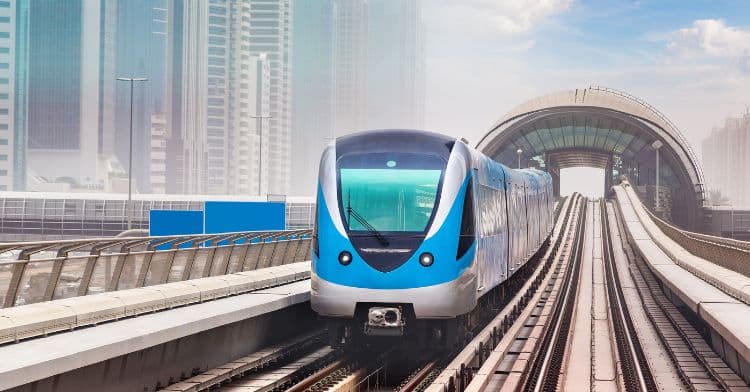Nokia Press Release | August 27, 2025
- Nokia launches a comprehensive high-speed, high-capacity, low-latency 5G-based mobile broadband radio in 1900 MHz band.
- Along with an optimized Nokia 5G standalone (SA) core for railways, the solution enables seamless migration to FRMCS on a global scale.
- It allows rail operators to initiate a new era in automated operations, sustainable transport and enhanced passenger services.
Espoo, Finland – Nokia today announced its new 5G radio solution, designed to deliver high-capacity, high-performance and resilient real-time communications to rail operators worldwide, setting the foundation for the Future Railway Mobile Communication System (FRMCS). As a cornerstone for smarter, safer and more efficient rail networks, the solution supports greater digitalization and automation, driving benefits for passengers, businesses and the environment. The launch features the industry’s first commercial 5G radio for the 1900 MHz (n101) band, along with Nokia’s Core Enterprise Solution for Railways, purpose-built to accelerate the sector’s digital transformation.
In the coming decade, FRMCS will upgrade the current 2G Global System for Mobile Communications – Railway (GSM-R) and become the next-generation global standard designed for all railways. Its 5G-based successor, with built-in security and high reliability, enables enhanced automation, new digital applications, improved passenger services and secure cross-border communication.
Nokia is a global leader in railway communications with decades of experience in GSM-R deployments across more than 20 countries. The company has been at the forefront of FRMCS development, collaborating with rail operators, governments, industry and standardization bodies to help shape the standard and enable its global deployment.
The drive toward digitalization demands the kind of high-speed connectivity and data capabilities that legacy systems simply can’t provide, creating an urgent need for rail operators worldwide to modernize. Our commercial 5G solution, backed by decades of proven rail industry expertise, reflects our commitment to laying the foundation for the next generation of railway operations. We offer a future-proof, flexible technology platform that supports a smooth transition to FRMCS while improving operational efficiency, safety and the overall passenger experience.
Tommi Uitto, President of Mobile Networks, Nokia
Nokia’s new 5G radio is built for mission-critical communications and supports strategic coexistence, enabling railways to migrate to 5G alongside legacy systems like GSM-R with no disruption. In addition, its fully optimized, cloud-native 5G SA core supports the full suite of FRMCS functionalities for the transport stratum. Modular, flexible and scalable, the solution enables both regional and nationwide deployments. It will also be tested under the EU-funded FP2-MORANE-2 project, which builds on earlier FRMCS initiatives to advance the digitalization of rail operations across Europe.
The shift to a 5G solution introduces powerful capabilities that align perfectly with the operational needs of modern railways, particularly in border crossing scenarios. Here are some of the main benefits for rail operators and passengers:
- Automated train operations: Enabling real-time control and monitoring of trains to improve safety and efficiency, and decreasing energy consumption and emissions.
- Passenger information systems: Providing real-time updates and information to passengers for a better travel experience.
- Mission-critical voice communication: Integrating voice, video and data services in a single, standardized platform to enhance operations and infrastructure management.
- Smart rail maintenance: Utilizing predictive maintenance and real-time monitoring to reduce downtime and maintenance costs.
Nokia is committed to driving the digital transformation of the railway sector through advanced, future-ready technologies. The new solution includes a commercial 5G radio for the 1900 MHz band from its industry-leading AirScale portfolio, paired with its railway-optimized Core Enterprise Solution. It is complemented by the company’s extensive portfolio of mission-critical IP, optical, and data center networking products. Nokia’s solutions are also compliant with the highest standards and feature a best-in-class cybersecurity framework.































